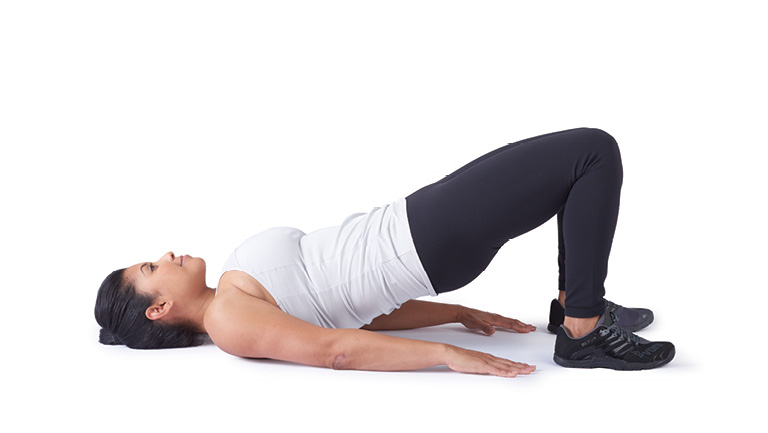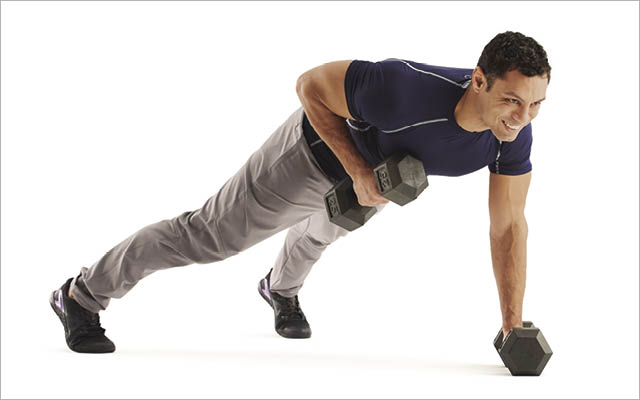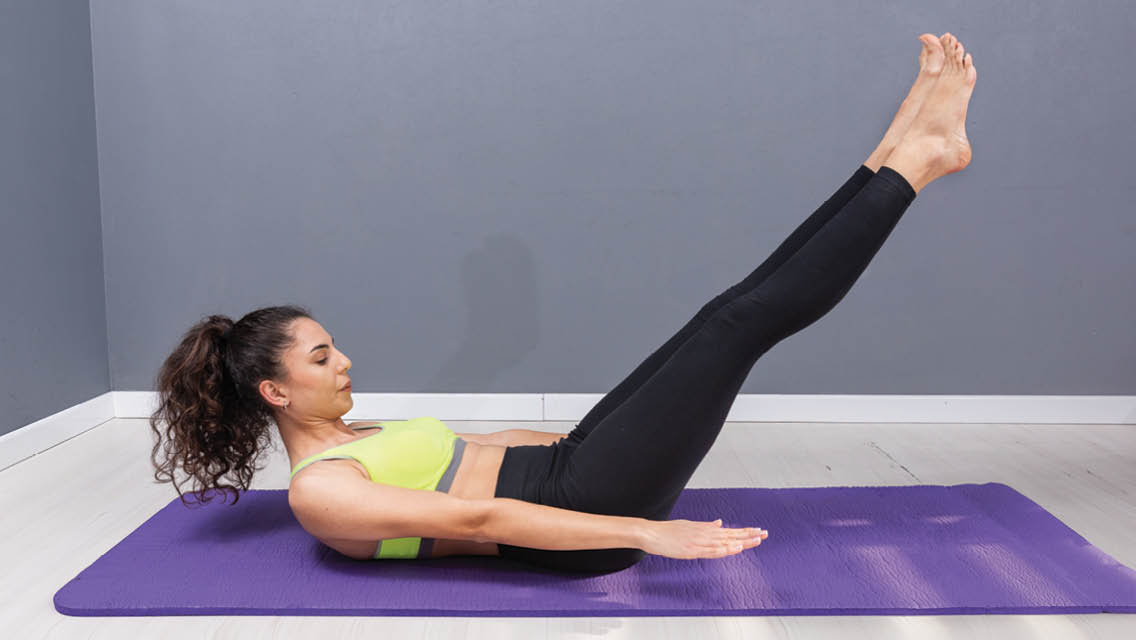From her early teens until her early 30s, Linda Formichelli struggled with chronic and often-debilitating lower-back pain – pain so bad she sometimes could hardly walk. Over the years, she consulted several doctors and a chiropractor, but “nobody could figure out what was wrong,” says the 36-year-old writer from Blackstone, Mass. The pain was especially bad when Formichelli stood for long periods of time. Ice packs, heating pads and aspirin provided some relief, but it was only temporary.
Because of her aching back, Formichelli hesitated to exercise or get involved in sports – until 2001, when a friend talked her into taking up karate, a sport that had always fascinated her. “But the pain really got in the way, because every time I tried to do a kick or something, my back hurt,” she says.
Frustrated, Formichelli decided to seek professional help once again. This time she went to a physical therapist. “She gave me some exercises to work on my core strength,” Formichelli says. She was skeptical (after all, nothing else had worked), but she was also willing to give almost anything a try, so she began spending 10 minutes each day crunching, stretching and twisting her “core” – the muscles in her pelvis, lower back, hips and abdomen.
Within six weeks, her body had undergone an amazing transformation. “The pain went completely away,” she says, still astonished by the apparent miracle of it all. “It was great. I’d never been without back pain before.”
A year ago, the American Council on Exercise (ACE) predicted that core strengthening would be among the top 10 fitness trends in 2005. And experiences like Formichelli’s are just one reason why the experts are zeroing in on the body’s midsection. Recent research suggests that strengthening your core muscles may not only improve your athletic ability but also help you ward off potential injuries. If you’re seeking ways to overcome or avoid pain, improve your performance, or simply lug laundry up the basement stairs with greater ease, core exercises may be beneficial. A strong and stable core can help you stand straighter, breathe easier and even have more energy.
The Center of Things
What exactly are your core muscles? Your abs, of course (see “Abs, Simplified“). But your core also includes muscles in your chest, back and hips – in fact, all the muscles in and around your trunk and pelvis. “The core is really the link between the upper and lower extremities,” says Edward Laskowski, MD, codirector of the Mayo Clinic Sports Medicine Center and a specialist in physical medicine and rehabilitation. “Any action you take below or above goes through the core.”
And that’s why these core muscles are so important. Whether you’re a professional baseball pitcher hurling a 90-mile-an-hour fastball or a parent lifting a hefty toddler, you need a solid core for strength and stability. “Having a strong core allows the various parts of your body to effectively and efficiently transfer the forces that other muscles create, and to do that without getting hurt,” says Cedric Bryant, PhD, chief exercise physiologist at ACE.
To better understand how kinetic energy (the energy of motion) is transferred through the core muscles, let’s examine that image of the professional baseball pitcher. If he didn’t use his legs at all during his pitching motion, would he throw as hard as when he makes a full wind-up using his lower body? Of course not. To throw a truly powerful pitch, the pitcher must transfer the kinetic energy generated in the lower half of his body at the start of his wind-up to his throwing arm (and then to the ball). And the only route that energy can take is through the pitcher’s core muscles. The sturdier your core, the more efficient and reliable the transfer of energy.
Take Action
Most whole-body exercises and activities help develop core strength, because they demand it. Unfortunately, sitting on your duff – whether at a desk job, in traffic or in front of a home entertainment system – doesn’t. Which is why so many people in our sedentary society wind up with back problems.
Happily, numerous techniques and exercises are available for strengthening the body’s core. You can use stability balls, balance discs and other props (when you sit on a stability ball, for example, your core muscles automatically go to work to help you keep your balance), but many core-strengthening exercises can be performed without special equipment.
Basic floor exercises, such as plank and bridge (see sidebar), are a great place to start. Yoga and Pilates are also great for developing core strength, and many fitness centers offer special core-training classes.
If it’s been a while since you worked on your core, or if you’ve been inactive for a long period of time, start slowly and build up to more challenging exercises as your core strength improves. If you have a serious back problem or other injury, be sure to consult with a licensed physical therapist or certified personal trainer before doing any core exercises.
“Core training should be viewed as a complement to your other types of exercise,” Bryant says. “As a general rule, you should try to do core-strengthening exercises at least two to three times a week for about 20 minutes or so.” You can easily integrate core training into your regular aerobic and weightlifting workouts. Include some core exercises, such as straight leg raises, abdominal crunches and forward leg lunges (with chest and upper torso upright), before or after your 5-mile run, pick-up basketball game or cycling class. Core strengthening is also built right into most good weightlifting programs. Compound lifts in particular, like squats, demand a great deal of core strength and control. And, says Laskowsi, “Even a biceps curl, if done right, with a correctly positioned pelvis and good abdominal control, can be a great core-stabilization exercise.”
However you go about strengthening your core, it’s important to keep at it. That’s a lesson Linda Formichelli has learned the hard way: When her back became pain-free, she let her daily core-training sessions lapse. Recently, she took up horseback riding – and began to notice an occasional sharp twinge in her lower back. “I’m going to have to start doing the exercises again,” says Formichelli. “I’ve got to get back to my core.”
Core Workout
Looking to test or strengthen those midsection muscles? Try these exercises to evaluate your level of fitness and your exercise needs. Then practice them regularly to improve your core strength and stability.
1. Plank: Lie on your stomach. Place your hands on the floor with your wrists directly beneath your shoulders, tighten your core (abdominal and back) muscles, then extend your arms to lift your body. Your head, neck, back and legs should form a straight line (like a plank of wood). Gaze down at the floor. Hold the position for three deep breaths (five to eight seconds), rest briefly, then repeat. Build up to longer holds of a minute or more. Once you’ve mastered that, try rotating your body from the regular plank position into the side-plank pose, detailed below.
For a modified plank, do the exercise with your forearms on the floor, elbows directly under your shoulders, fists facing each other. Tighten your core muscles; hook your toes under, then press down through your forearms and extend your legs to lift your body. Your weight should be supported on your flexed toes and forearms; your back should be flat, not swayed down or tented up. Hold plank as directed above.
(See “Pump Up Your Plank” for a variety of plank options.)
2. Side Plank: This exercise, borrowed from yoga, targets the muscles along the side of your body. Lie on your right side, supporting yourself on your right forearm (make sure your right shoulder is directly over your right elbow). Stack your left foot on top of the right and keep your legs very straight. Tighten your core muscles so that your shoulders, hips and knees stay aligned. Press down through your right arm to raise your body. Hold the position for three deep breaths (five to eight seconds). Relax, then repeat on your left side.
For a more challenging exercise, balance on your right hand (rather than your forearm) and stretch your left arm toward the ceiling (2a). Hold for three deep breaths, then repeat on the other side.
(Learn more at “BREAK IT DOWN: The Side Plank“.)
3. Bridge: Lie on your back with your knees bent. Your feet should be under your knees, parallel and hip-width apart. Make sure your back is in a “neutral” position – not pressed into the floor nor overly arched. Tighten your abdominal muscles, slightly tilt your tailbone toward the ceiling, then slowly raise your hips off the floor (3a). Your knees should point forward. Hold this position for three deep breaths (five to eight seconds). Return to your starting position, rest briefly, then repeat. To give your core an extra challenge, try doing the exercise with a resistance band looped around your thighs, just above your knees. As you lift your hips, push your knees outward against the band.
(Finesse your bridge form at “BREAK IT DOWN: The Glute Bridge“.)
This article originally appeared as “Core Values” in the November 2005 issue of Experience Life.



This Post Has 0 Comments